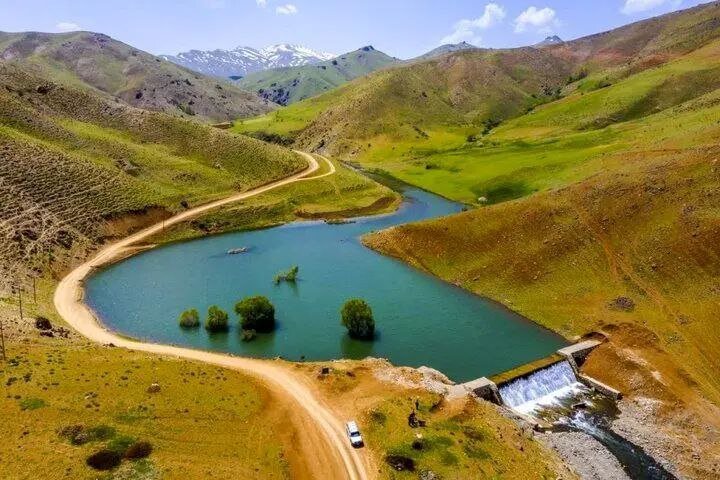Watershed management budget increased by fifteenfold

TEHRAN –The national budget bill for watershed management in the current Iranian calendar year (March 2025-March 2026) is fifteenfold the budget for its preceding year, the head of the Natural Resources and Watershed Management Organization has said.
Implementing watershed and aquifer management projects can lead to rainfall penetration into the land or infiltration, strong vegetation cover, reduced soil erosion, and improved land dynamics, ISNA quoted Ali Teymouri as saying.
Referring to the drop in rainfall and the rise in global temperature, which can contribute to sand and dust storms, the official said that although the Ministry of Energy focuses on governance in water resources management, from the Natural Resources and Watershed Management Organization's perspective, territorial sovereignty needs to be considered.
Natural resources, vegetation, biodiversity, fauna, soil, and even air must be seen as an interconnected whole. If the rate of water evaporation is ignored, decision-making based on the amount of water remaining cannot be efficient.
Out of some 400 billion cubic meters of annual rainfall, with 280 billion cubic meters evaporating, only 110 to 120 billion cubic meters of manageable water remains. According to the Ministry of Energy, this year the figure has dropped to 66 billion cubic meters, indicating a 20 to 30 percent decrease compared to its preceding year, Teymouri stressed.
If just 10 percent of the water that evaporates is managed through watershed and aquifer management methods, many positive changes will be brought about.
Currently, about 6,500 villages and 450 cities are at risk of flooding. Managing runoff upstream in these areas is one of the duties of the Natural Resources Organization. Totally, about 25 to 28 million hectares of critical lands have been identified in the country that have the capacity to implement watershed management projects. They are at the top of the agenda of the organization’s programs, Teymouri said.
According to the seventh national development plan (2023-2027), over the course of 5 years watershed management project is scheduled to cover 20 million hectares of the land in the country, that is four million hectares each year.
Less than normal rainfall forecast for next 6 months
Precipitation in the remaining months of the year until early December is forecast to be less than normal, according to the Meteorological Organization.
Summer average rainfall will be less than normal in provinces located north of the Alborz Mountains, on the southern slopes, and northwest. In some areas in the southeast, it tends to be above normal; in other parts, there will be low or no precipitation, ISNA reported.
As summer precipitations contribute to a relatively small proportion of the total annual rainfall, the current water year is projected to end (on September 22) with 40 percent less than normal rainfall.
Autumn rainfall is expected to start later than normal; in the northwest, it is forecast to be 60 percent less than normal, and in other parts, there will be some 50 to 60 percent reduction in precipitation.
In the first two months of the summer, the temperature in the southeast of the country and the Caspian coast will be normal; it will be 1-2 degrees higher than normal in the northwest, and 0.5 –1 degree higher in other regions, respectively.
From September 6 to October 7, average rainfall in most parts of the country will be the same as the normal long-term amount. In the northwest region, the temperature will rise by 1-2 degrees; in other regions, it will be 0.5 – 1 degree higher than normal.
From October 7 to November 6, average rainfall is estimated to be less than normal on the two sides of the Alborz Mountains, northwest, and provinces in the northern and southern Zagros. There will be no precipitation in other regions of the country.
The temperature will get 1-2 degrees higher in the northwest, northern, and middle Zagros; in the eastern part of the country, the average temperature will be normal, while in other parts, a temperature increase of 0.5–1 degree above normal is expected.
From November 6 to December 6, average rainfall tends to be less than normal in northern, middle, and southern Zagros, as well as provinces located east of Zagros.
Average temperature will be normal in some areas of the east, south-east, and Dasht-e Kavir (the central desert of Iran), 1–2 degrees above normal in the middle and southern Zagros, and 0.5–1 degree higher than normal in other parts.
The greatest decrease in precipitation is projected to occur in the second month of autumn, particularly in the middle Zagros.
MT/MG
